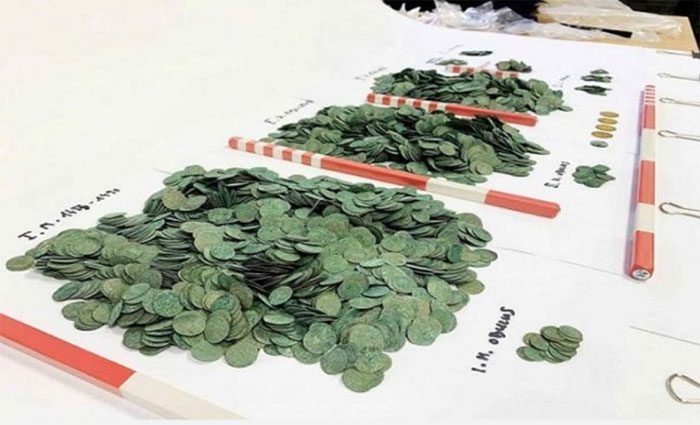Archaeologists suggest that the owner of this treasure may have buried it in a hurry due to military upheaval, but never had the chance to recover it.
A farmer in Újlengyel village, located in central Hungary, was digging on his land when an event occurred that changed his life. While digging at a depth of less than 1 meter, the farmer’s hoe struck something quite hard. He initially thought he had hit a rock.
As he dug deeper, the farmer discovered it was a jar, which had broken upon impact. Seemingly, something green fell out from inside the jar, and upon closer inspection, he realized these were ancient coins.
The farmer immediately reported his find to the Ferrenczy Museum. A group of archaeologists was dispatched to the site. They uncovered a treasure consisting of 7,000 silver coins and 4 gold coins from the Medieval period that had been hidden centuries ago.

While digging, the farmer accidentally found a jar of ancient coins. (Photo: Dailymail).
These coins date back to various periods. The oldest coins are Denarius silver coins featuring the image of Lucius Verus, who was the Emperor of the Roman Empire from 161 to 169 AD (Hungary was once part of the Roman Empire).
The most recent coins were issued during the reign of King Louis II, who ruled Hungary from 1516 to 1526. By the end of the Medieval period, the amount of money found would have been sufficient to purchase seven horses. Today, the value of these coins has increased significantly. This could be considered one of the largest collections of ancient coins ever unearthed in Hungary.
Archaeologists indicate that they have yet to find any information about the treasure’s owner, but it is likely that this individual hastily buried their wealth during the Ottoman Empire’s attack in 1526. Researchers are continuing to survey the area in hopes of discovering more valuable findings soon.


















































